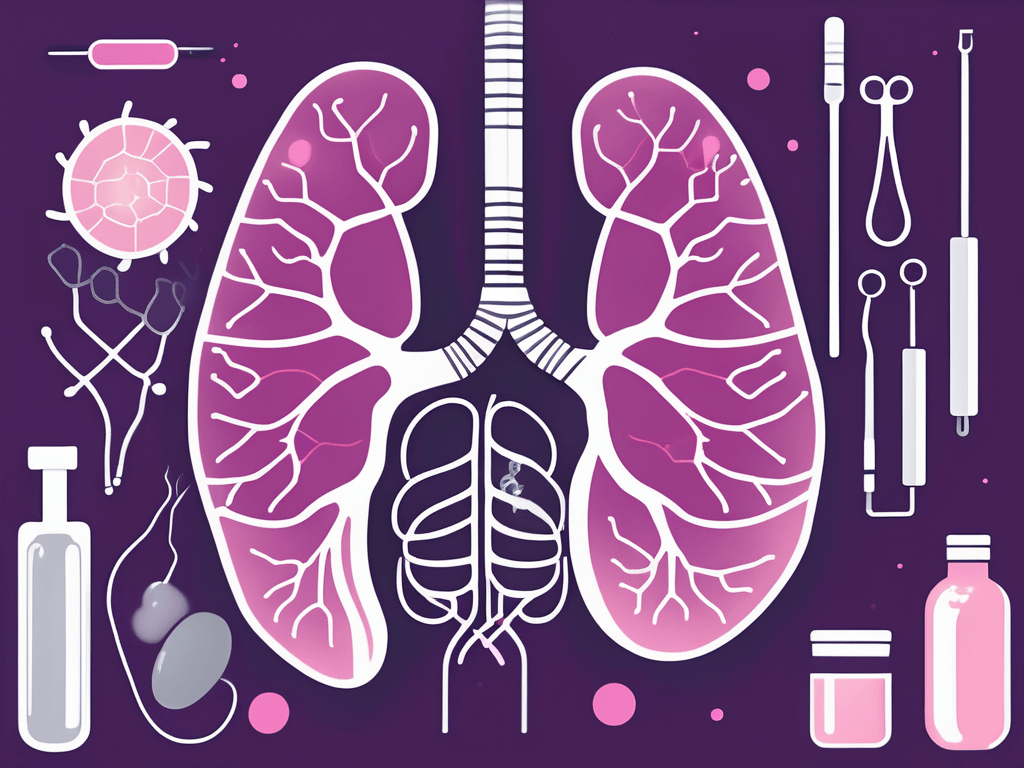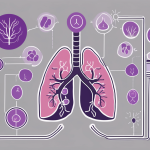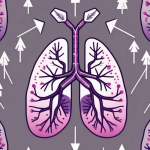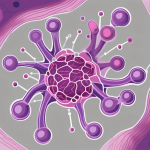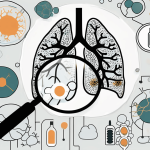Non-small cell lung cancer (NSCLC) is the most common type of lung cancer, characterized by its slower growth compared to small cell lung cancer. This article provides comprehensive information on NSCLC, covering its definition, subtypes (adenocarcinoma, squamous cell carcinoma, and large cell carcinoma), causes, symptoms, diagnostic procedures, and treatment options. By understanding the complexities of NSCLC, individuals can make informed decisions about their health and treatment plans, ultimately improving their chances of successful outcomes. Early detection and multidisciplinary treatment approaches are emphasized as crucial factors in managing NSCLC effectively.
Non small cell lung cancer (NSCLC) is a complex and serious condition that affects many individuals around the world. It is important to have a clear understanding of NSCLC, including its causes, symptoms, and available treatment options. This article will provide you with comprehensive information to help you navigate through the various aspects of NSCLC and make informed decisions about your health.
What is Non Small Cell Lung Cancer?
When we talk about non small cell lung cancer, we are referring to a specific type of lung cancer that primarily affects the cells lining the lungs. Unlike small cell lung cancer, which tends to grow rapidly and spread quickly, NSCLC typically grows more slowly and is less likely to spread to other parts of the body. This distinction is important when it comes to determining the appropriate treatment approach.
It is worth noting that NSCLC accounts for the vast majority of lung cancer cases, making it the most common type of lung cancer diagnosed.
Non small cell lung cancer is a complex disease that requires a comprehensive understanding of its subtypes and treatment options. By delving deeper into the intricacies of NSCLC, we can better comprehend its impact on patients and the importance of accurate diagnosis.
Defining Non Small Cell Lung Cancer
Non small cell lung cancer is a term used to describe a group of lung cancers that share similar characteristics. The most common subtypes of NSCLC include adenocarcinoma, squamous cell carcinoma, and large cell carcinoma. Each subtype has its own unique features and treatment considerations, so it is crucial to receive an accurate diagnosis in order to tailor the treatment approach to your specific needs.
Adenocarcinoma is the most common subtype of NSCLC and is often found in the outer regions of the lungs. It is more commonly diagnosed in non-smokers and tends to grow more slowly compared to other subtypes. Squamous cell carcinoma, on the other hand, is typically found in the central airways of the lungs and is strongly associated with smoking. Large cell carcinoma is a less common subtype and is characterized by the presence of large, abnormal cells.
Understanding the different subtypes of NSCLC is crucial for determining the most effective treatment plan. Each subtype may respond differently to various therapies, highlighting the importance of personalized medicine in the management of this disease.
Differentiating Between Small Cell and Non Small Cell Lung Cancer
While both small cell lung cancer (SCLC) and NSCLC are forms of lung cancer, they differ in terms of their growth pattern, spread, and treatment protocols. SCLC is typically aggressive and tends to spread quickly to other areas of the body, whereas NSCLC tends to grow more slowly and has a higher chance of being localized to the lungs. The treatment options for these two types of lung cancer vary, so it is crucial to have an accurate diagnosis.
When it comes to treatment, NSCLC offers more options compared to SCLC. Surgery, radiation therapy, chemotherapy, targeted therapy, and immunotherapy are among the treatment modalities that may be considered for NSCLC, depending on the stage and characteristics of the cancer. In contrast, SCLC is often treated with a combination of chemotherapy and radiation therapy due to its aggressive nature and tendency to spread rapidly.
It is important to note that accurate diagnosis is essential for determining the most appropriate treatment approach. Through advanced diagnostic techniques such as molecular testing and imaging studies, healthcare professionals can gain valuable insights into the specific characteristics of the cancer, allowing for a more personalized and targeted treatment plan.
Non small cell lung cancer is a complex disease that requires a multidisciplinary approach involving oncologists, radiologists, pathologists, and other healthcare professionals. By staying informed about the latest advancements in NSCLC research and treatment, patients and their loved ones can make well-informed decisions regarding their care and improve their chances of successful outcomes.
The Causes of Non Small Cell Lung Cancer
The development of NSCLC is often attributed to a combination of genetic and environmental factors.
Genetic Factors in Non Small Cell Lung Cancer
While a small percentage of NSCLC cases are linked to specific genetic mutations, the majority of cases are not directly inherited. However, individuals with a family history of lung cancer may have a slightly higher risk of developing the disease. Genetic testing can help identify specific mutations and guide treatment decisions.
Environmental Triggers for Non Small Cell Lung Cancer
Cigarette smoking is the leading cause of NSCLC. The carcinogens found in tobacco smoke can lead to mutations in the lung cells, increasing the risk of developing lung cancer. Other environmental factors, such as exposure to secondhand smoke, air pollution, and certain occupational hazards, can also contribute to the development of NSCLC.
It is important to note that while smoking is a significant risk factor, non-smokers can still develop NSCLC. In these cases, other environmental factors or genetic predispositions may be at play.
Recognizing the Symptoms of Non Small Cell Lung Cancer
Early detection of NSCLC is crucial for successful treatment outcomes. Knowing the symptoms can help you seek medical attention at the earliest possible stage.
Early Warning Signs of Non Small Cell Lung Cancer
Early symptoms of NSCLC may include persistent coughing, coughing up blood, shortness of breath, chest pain, hoarseness, unexplained weight loss, and recurring respiratory infections. It is important not to ignore these symptoms and to promptly consult with a healthcare professional.
Progression of Symptoms in Non Small Cell Lung Cancer
As NSCLC progresses, additional symptoms may manifest, such as fatigue, loss of appetite, bone pain, headaches, and swelling in the face or neck. These symptoms may vary from person to person, and it is important to communicate any changes to your healthcare team.
Diagnostic Procedures for Non Small Cell Lung Cancer
Accurate diagnosis of NSCLC involves a series of tests and procedures that help determine the extent of the disease and guide treatment decisions.
Imaging Tests for Non Small Cell Lung Cancer
Imaging tests, such as chest X-rays, computed tomography (CT) scans, and magnetic resonance imaging (MRI), allow healthcare professionals to visualize the lungs and identify any abnormalities. These tests help in assessing the location, size, and spread of the tumor.
Biopsy and Pathology Tests for Non Small Cell Lung Cancer
A biopsy is an essential procedure in the diagnosis of NSCLC. It involves the removal of a tissue sample from the lung for examination under a microscope. Pathology tests are then conducted to determine the subtype of NSCLC and provide information about its characteristics, which guides treatment decisions.
Treatment Options for Non Small Cell Lung Cancer
The treatment of NSCLC depends on several factors, including the stage of the cancer, the subtype, and the patient’s overall health. A multidisciplinary approach involving healthcare professionals from various specialties is often employed to develop an individualized treatment plan.
Surgical Interventions for Non Small Cell Lung Cancer
Depending on the stage and location of the tumor, surgery may be recommended as the primary treatment option. Surgical procedures for NSCLC include lobectomy, pneumonectomy, and wedge resection. These procedures aim to remove the cancerous tissue and potentially cure the disease.
Radiation Therapy for Non Small Cell Lung Cancer
Radiation therapy uses high-energy beams to target and destroy cancer cells. It can be used as the primary treatment for early-stage NSCLC or as an adjunct to surgery or chemotherapy. Advanced techniques, such as intensity-modulated radiation therapy (IMRT) and stereotactic body radiation therapy (SBRT), help deliver precise radiation doses while minimizing damage to healthy tissues.
Chemotherapy and Targeted Therapy for Non Small Cell Lung Cancer
Chemotherapy involves the use of drugs to destroy cancer cells or slow down their growth. It is often used in combination with other treatment modalities for advanced or metastatic NSCLC. Targeted therapy, on the other hand, uses drugs that specifically target genetic mutations or specific proteins present in cancer cells, minimizing harm to normal cells.
It is important to discuss the potential benefits and side effects of these treatment options with your healthcare team to make an informed decision based on your specific circumstances.
Understanding non small cell lung cancer is crucial for those diagnosed with the disease and their loved ones. By familiarizing yourself with the causes, symptoms, and treatment options, you can take an active role in your healthcare journey. Remember, early detection and prompt treatment can greatly improve prognosis and enhance quality of life. Consult with your healthcare team to develop a personalized treatment plan that addresses your unique needs and provides you with the best chance for a positive outcome.

